Some Mcharrison Doodles! Really Missed Drawing These Guys.


Some mcharrison doodles! really missed drawing these guys.
If you don’t undertstand the B7 reference; there’s a story when they were kids in which they took a bus across Liverpool to learn the B7 chord from someone who knew how to play it. So i just drew them happily saying they learn the B7 chord, finally.
More Posts from Beatlesinfoarchive and Others
Paul McCartney discusses the design for Sgt Pepper with Mike Read in an interview for BBC Radio 1 (broadcast 1989)
PAUL: See I always hark back, when I'm making a record, in my mind, to me - in Liverpool I used to get on the bus, Saturday morning, go down to this big department store called Lewis's, go in the record department, get my record, that was a big favourite I'd been saving up for, get on the bus, upstairs on the bus, and unwrap it. And then I had a half hour to look at it. I couldn't play it, but I could look at it, and read the sleeve note and look at the pictures and everything. So I knew that other people would be doing that kind of thing so we designed Pepper with that in mind, you know, the person who's just been to his version of Lewis's, he's got that half hour to go home. So we'll give him masses, he could look at this one for months, you know, because after all its only cardboard and it really doesn't cost more to put a complicated picture on than it does just to put a picture of an orange, or something. READ: Of course Brian Epstein's idea was it being brown paper bags. PAUL: Well Brian was very keen on the album, we'd played it [for] him once it was all finished out at George's house. He was very sort of flamboyant [Brian impression] 'Oh! It's wonderful.' He really loved it, you know, he did this big, theatrical [Brian impression] 'Oh it's a wonderful album!' And we said 'Well we're still thinking about the cover, you know, we can't quite decide how to do the cover.' He said [Brian impression] 'Put a brown paper bag on it, it doesn't matter. It's so wonderful.'

George Harrison interviewed for Good Morning Australia in 1982.
“A very sincere gentleman. He’s got a great philosophy, a wonderful sense of humor. And I didn’t find him the quiet one.” - Kerri-Anne Kennerley, Good Morning Australia, 1982
“Ex-pop star, peace-seeker, gardener, ex-celeb, until now.” - George Harrison (on how he would describe himself in 1982), Good Morning Australia, 1982
Kerri-Anne Kennerley: “Do you think life is all predetermined?” George Harrison: “In some respects it is, although we do have control over our actions right at this moment. I think that what we are now is the result of our past actions. What we’re going to be is going to be the result of our present actions. As again, they said in the Bible, ‘God is not mocked, whatsoever man soweth that shall he also reap.’ That means the law of karma — action/reaction. There’s certain things that maybe there’s no way out, like, there’s no way I wasn’t going to be in The Beatles, even though I didn’t know it. In retrospect I can see that’s what it was — it was a set-up. At the same time, I do have control over my actions and I can do good actions or bad actions or I could try being a pop star forever and going on TV and do concerts and be a celebrity, or I can be a gardener.” - Good Morning Australia, 1982 (x)
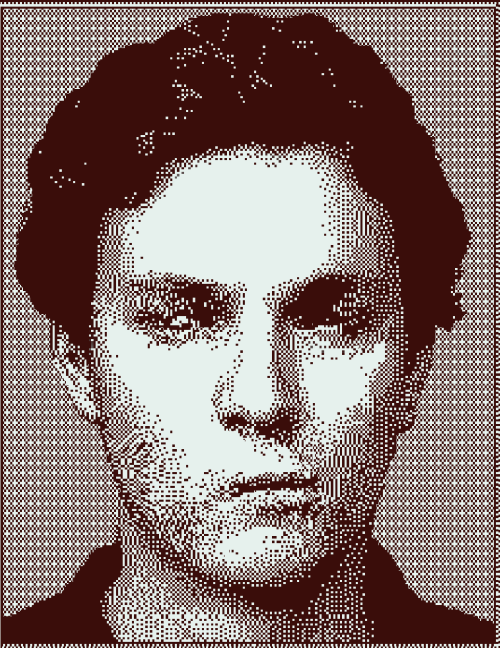

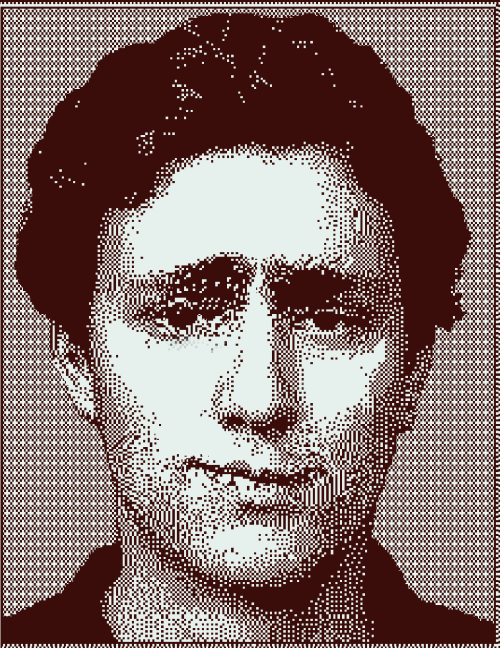

edited some of William's facial expressions for. reasons.













Pages from Klaus Voormann's ICONIC – The Graphic Novel of The Beatles Revolver Cover Artwork
Nothing I Love More than Old Beatles Sites




Live long, my angels.
gay beatles slash fanfiction has existed since beatlemania, unsurprisingly. so here's some stuff on that topic

"The most visible rock based BandFic community during this era is The Beatles. On August 18, 1960, The Beatles started playing under that name for the first time at an event in Hamburg, Germany. (Whelan) It would be four more long years before the band would make their American debut, an event that occurred on February 7, 1964 when they arrived in New York City for their first American tour. (Whelan) According to Barbara Ehrenreich, Elizabeth Hess, and Gloria Jacobs in their essay "Beatlemania: Girls Just Want to Have Fun," this event marked "the first mass outburst of the sixties to feature women – in this case girls, who would not reach full adulthood until the seventies and the emergence of a genuinely political movement for women’s liberation." This group, composed primarily of middle class, white teenagers, would form one of the core groups in the nascent bandfic community. In their adulation of the band, they would create many of their own fan related products including stories, zines and art. The fannish oral tradition that is alive today is implicit in the existence and circulation of fictional stories about band members during the early years of the band's history. Because the audience was young and not connected into a professional or underground movement, much of the material created by this group of fan girls never was published. The production, in most cases, likely consisted of one to five copies of a story being circulated only among the fan’s immediate peer group. The emergence of The Beatles, their popularity and their fans dedication to creating fan works was helped because of the era in which they appeared. The Beatles were at the forefront for many white, middle class teenage girls in helping them redefine their own definition of sexuality and their own definitions of what it meant to be female. (Ehrenreich) This was taking place in an era where there was that increased debate on subjects like "birth, a woman's obligation to society, and conception, bringing with it all of the bitterness and acrimony that have long surrounded these issues, beginning with perhaps the most obvious one of them all -- Sexism." (Rowland) Legal gender differences between men and women were beginning to fall. (Rowland) For young, white, middle class female Beatles fans, writing stories about the band was an opportunity to challenge their parents, to revel in the new ideas regarding male sexuality, to explore their own and more. They could write about marrying Ringo or having children with Paul McCartney. They could write about being noticed by the George Harrison at a concert and all that followed afterward. Most fans knew that none of those scenarios were likely to happen. Some deeply resented the idea of a member of the band becoming involved with any woman because it destroyed their own fantasies. They did not want to see that happen. It is highly probable, that given this and the fact that they were writing fictional stories featuring the Beatles, that some of the Beatles were written as homosexual if only as a way to ensure that the object of the fan's lust, since they could not be hers, would never belong to another female fan. The idea of writing male on male pairings to cut out other female fans is one that would reappear again and again during the next forty years as new bands were discovered and attracted new groups of young female fans." (X)
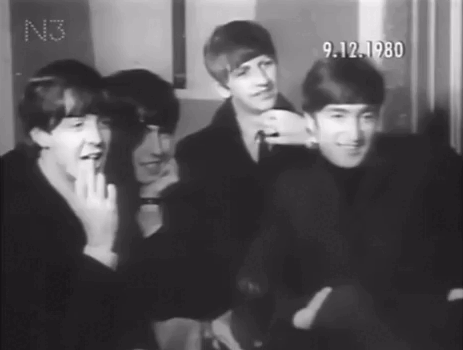
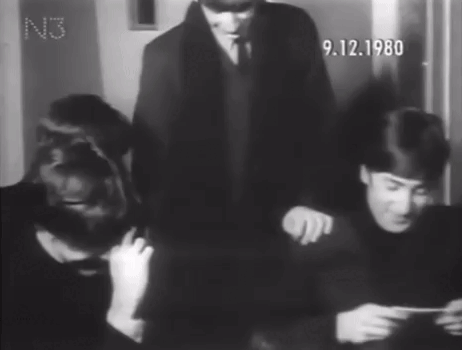
The Beatles interviewed for East at Six Ten, ahead of their concert at the Regal Cinema in Cambridge, 26th November 1963
The whole idea of calling it ‘Lennon-McCartney’ instead of Paul Lennon and John McCartney… other way round…
Paul McCartney interviewed by Joe Smith, 22 October 1987
Rare photos

May 23, 1957. The Liverpool band Eric Clayton's Skiffle Band performs. This is the first shot of Ringo playing the drums (far left).

The photo on July 6, 1957 (the day John met Paul), where Lennon sings standing on an open truck, has become a textbook and is found in many books and websites. And this picture, taken a little later in the day, is not well known to many people.
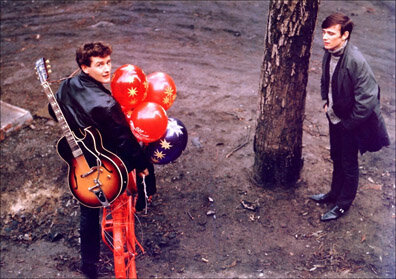
The bassist and an important member of the early line-up of the band was Stuart Sutcliffe, who unfortunately passed away early. In all his short life, only one color shot of him was taken, this one, where he is captured with singer Tony Sheridan. Stewart is on the right.

Most likely, you don't know who it is. Meanwhile, this man turned the history of world music around. This is Kurt Raymond Jones, the same customer who came into the store and asked for the Beatles record My Bonnie, which is why Brian Epstein first heard about the band, began looking for them and eventually turned into a manager. For a long time it was believed that there was no Raymond Jones. Like, it's just a character invented for the convenience of telling a story. However, here he is!

The only shot where you can see drummer Pete Best, who will later be fired, and Ringo Starr, who will take his place, together.

The Beatles are on the verge of fame performing in Liverpool. As you can see, they have someone else's drum kit, left on stage after the previous band.

Have you ever seen John's mother-in-law? Here she is, the mother of his first wife, Cynthia, next to him.

The only picture where Brian Epstein holds a musical instrument in his hands and seems to extract sounds from it.

This is a giant shoe from the movie "Help!", which was needed to shoot a scene where the Floor shrank in size. As the photo shows, this piece of props later became a decoration in the garden near Lennon's house.

The Beatles in a hippie look ride in an ordinary subway car, and no one recognizes them? How can this be? This is 1967, the picture was taken in Greece, where a harsh political regime reigned at that time and the group was not so well known.
-
 maksbrainrotdump reblogged this · 2 weeks ago
maksbrainrotdump reblogged this · 2 weeks ago -
 glittter-skeleton liked this · 2 weeks ago
glittter-skeleton liked this · 2 weeks ago -
 short-soup liked this · 2 weeks ago
short-soup liked this · 2 weeks ago -
 cuil-meleth liked this · 4 weeks ago
cuil-meleth liked this · 4 weeks ago -
 squ3akerp33ker liked this · 1 month ago
squ3akerp33ker liked this · 1 month ago -
 scornedwrath liked this · 1 month ago
scornedwrath liked this · 1 month ago -
 beatle-stories333 liked this · 1 month ago
beatle-stories333 liked this · 1 month ago -
 faaaaann liked this · 1 month ago
faaaaann liked this · 1 month ago -
 lennonwee liked this · 1 month ago
lennonwee liked this · 1 month ago -
 alexanderyuhh liked this · 1 month ago
alexanderyuhh liked this · 1 month ago -
 lennison-yaoi liked this · 2 months ago
lennison-yaoi liked this · 2 months ago -
 sparklyheartsdiana liked this · 2 months ago
sparklyheartsdiana liked this · 2 months ago -
 mcmashedpotatoes liked this · 2 months ago
mcmashedpotatoes liked this · 2 months ago -
 gilles-prost liked this · 2 months ago
gilles-prost liked this · 2 months ago -
 multicoloured4mirrors liked this · 2 months ago
multicoloured4mirrors liked this · 2 months ago -
 mystictastemakergiver liked this · 2 months ago
mystictastemakergiver liked this · 2 months ago -
 melodicpepperdoodles liked this · 2 months ago
melodicpepperdoodles liked this · 2 months ago -
 topirchek liked this · 2 months ago
topirchek liked this · 2 months ago -
 alanangels liked this · 2 months ago
alanangels liked this · 2 months ago -
 suniday liked this · 2 months ago
suniday liked this · 2 months ago -
 captainkeyyy liked this · 2 months ago
captainkeyyy liked this · 2 months ago -
 amy-rose1993 reblogged this · 2 months ago
amy-rose1993 reblogged this · 2 months ago -
 itztylerteehee liked this · 2 months ago
itztylerteehee liked this · 2 months ago -
 thebeatlesgirly liked this · 2 months ago
thebeatlesgirly liked this · 2 months ago -
 crystal--lungs liked this · 2 months ago
crystal--lungs liked this · 2 months ago -
 boogiewoogie07 liked this · 2 months ago
boogiewoogie07 liked this · 2 months ago -
 fandomtrashsthings reblogged this · 2 months ago
fandomtrashsthings reblogged this · 2 months ago -
 sneakertin liked this · 3 months ago
sneakertin liked this · 3 months ago -
 mccartballs liked this · 3 months ago
mccartballs liked this · 3 months ago -
 letshaveadepressionparty liked this · 3 months ago
letshaveadepressionparty liked this · 3 months ago -
 amy-rose1993 reblogged this · 3 months ago
amy-rose1993 reblogged this · 3 months ago -
 amy-rose1993 liked this · 3 months ago
amy-rose1993 liked this · 3 months ago -
 calix-amini liked this · 3 months ago
calix-amini liked this · 3 months ago -
 velvetm1960 liked this · 3 months ago
velvetm1960 liked this · 3 months ago -
 th3-ace-in-space liked this · 3 months ago
th3-ace-in-space liked this · 3 months ago -
 strawberryfieldsforcody reblogged this · 3 months ago
strawberryfieldsforcody reblogged this · 3 months ago -
 strawberryfieldsforcody liked this · 3 months ago
strawberryfieldsforcody liked this · 3 months ago -
 ringospuppy liked this · 3 months ago
ringospuppy liked this · 3 months ago -
 teenagedirtbaglku liked this · 3 months ago
teenagedirtbaglku liked this · 3 months ago -
 murdocisgod526 liked this · 3 months ago
murdocisgod526 liked this · 3 months ago -
 sarahjohnlennonswife liked this · 3 months ago
sarahjohnlennonswife liked this · 3 months ago -
 humanorck liked this · 3 months ago
humanorck liked this · 3 months ago -
 beatlesinfoarchive reblogged this · 3 months ago
beatlesinfoarchive reblogged this · 3 months ago -
 maksbrainrotdump reblogged this · 3 months ago
maksbrainrotdump reblogged this · 3 months ago -
 makzmollpol liked this · 3 months ago
makzmollpol liked this · 3 months ago -
 milimilanesa liked this · 3 months ago
milimilanesa liked this · 3 months ago -
 repairingahole liked this · 5 months ago
repairingahole liked this · 5 months ago -
 suzybishops liked this · 5 months ago
suzybishops liked this · 5 months ago
